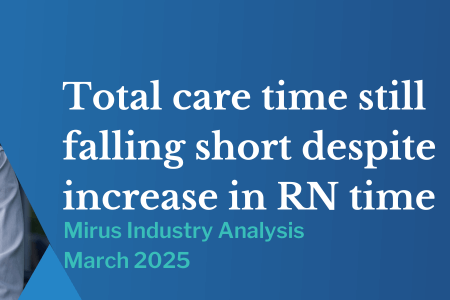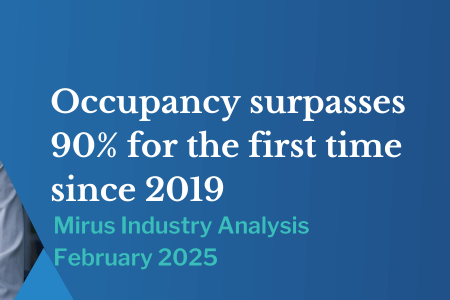Aged care workforce: real trends in play
March 7, 2018 | Workforce Management

There is an estimated number of 366,027 PAYG aged care workers in Australia. By 2050, the productivity commission estimates we will need 980,000 workers. That’s another 613,973 people or 19,186 people a year over the next 32 years. (1)
However, we can’t just play the numbers game, as there is another trend happening, which we ignore at our peril.
The workforce strategy trend.
“Once upon a time, it was just about care. Working closely with our clients over the years we have seen the registered nurse’s traditional roles and responsibilities expand to much, much more,” says James Price, Managing Director, Mirus Australia.
“Our successful clients still prioritise the provision of quality care, but also have a more laser focused approach on running a customer centric business. This includes funding, resident and client billing, people and culture management, consumer led marketing, communications and operational excellence in management, as just an example.”
The National Aged Care Staffing and Skills Mix Project Report 2016, suggested that RNs were found to spend significantly more time on practical nursing tasks, communication tasks, and administrative tasks than other members of staff. The report addressed the issue of reduced staffing levels and skills matrix in residential aged care and also collected evidence relating to the need for a staffing methodology that considers both staffing levels and skills mix. (2)
“In our view, we need to discuss the workforce strategy that encompasses the needs of the organisation in its entirety. This means diagnosing how people, technology, process and organisational change management are all working together, to achieve high quality care outcomes and sustainable business models. These outcomes are not mutually exclusive.”
James Price, Managing Director, Mirus Australia will be speaking at the DoComeMonday Leaders Summit 2018 in Sydney, Australia on March 16th. The future has arrived with workforce shortages placing individual facilities, home care services and full regions of customers at personal and financial risk. James will review the workforce strategies for their 100+ care clients. View the full program here.
Find out more about our workforce management solutions.
REFERENCES:
(1) THE AGED CARE WORKFORCE, 2016 March, March 2017 Kostas Mavromaras, Genevieve Knight, Linda Isherwood, Angela Crettenden, Joanne Flavel, Tom Karmel, Megan Moskos, Llainey Smith, Helen Walton and Zhang Wei.
(2) National Aged Care Staffing and Skills Mix Project Report 2016 Meeting residents’ care needs: A study of the requirement for nursing and personal care staff. 2016. Date: 2016 Citation: Willis, E., Price, K., Bonner, R., Henderson, J., Gibson, T., Hurley.


